How Close Is the Smart Factory of the Future?

Manufacturing is marching toward a future that is highly automated, intelligent and flexible.
Increasingly, smart factories are made up of connected machines that generate large amounts of data. This opens the door for artificial intelligence–driven analysis and new opportunities for insights on improving supply chains, processes, the customer experience, product quality and more.
But realizing this transformation can be difficult. Not all manufacturers have the resources, capital or talent required for a smart factory future. How are companies progressing on this journey, and what challenges stand in the way? To find out, the Manufacturing Leadership Council—the NAM’s digital transformation arm—conducted its Smart Factories and Digital Production survey.
Manufacturers are committed to M4.0: When it comes to digital technology, manufacturers are spending at a steady—and in some cases growing—basis.
- Nearly 69% of survey respondents said their M4.0 investments this year would continue unchanged from last year.
- Nearly 19% said they would increase investments, while just 10% said their investments would likely decline.
- Some 58% assessed their company’s digital maturity level in manufacturing operations at three to five on a scale of 10, suggesting the industry has moved beyond the initial stages of M4.0 and has reached an early majority of digital-model adoption.
How widespread are digital factories? Only about 7% of manufacturers say they have digitized their factory operations extensively.
- Approximately 15% expect to have their manufacturing operations digitized end-to-end by 2026.
- About 5% say their factories are already “very smart.”
- Approximately 53% say their factories and plants are getting smarter but are still works in progress.
In the future, will factories run themselves? While some manufacturers foresee a future of “lights out” factories, or those that mostly run themselves, most don’t think they will ever reach that state.
- About 49% of respondents expect fully or partially autonomous factories in the future.
- Some 40% say AI will be either very significant or somewhat significant in the years to come.
- Approximately 56% cite organizational resistance to change as the top barrier to implementing a smart factory.
For more details on these findings and the impact of smart factories as a whole, read the survey report: Smart Factories Are Still a Work in Progress.
Trend of the Week: Process Innovation
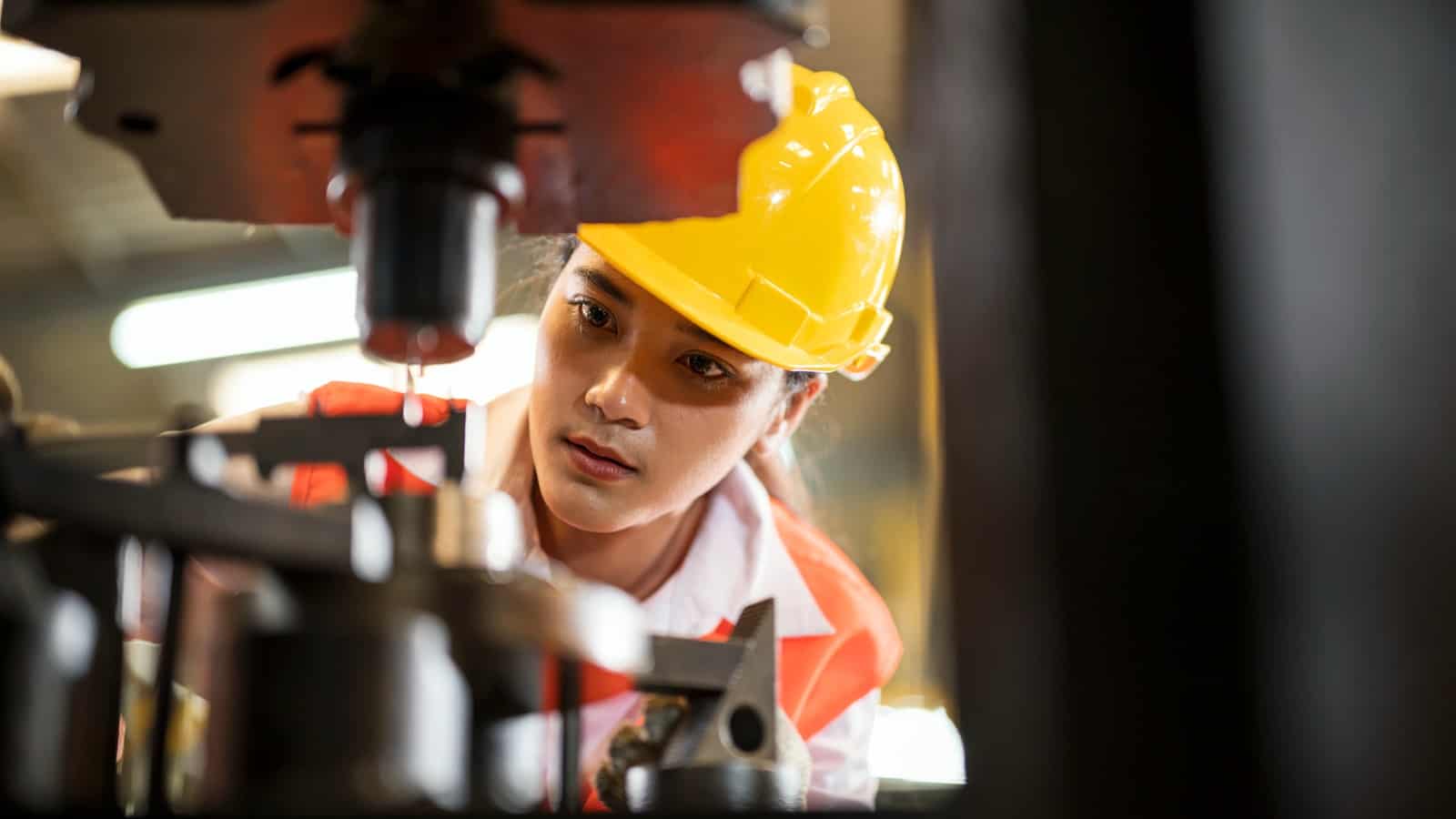
Amid an uncertain economy, manufacturers will have to reinvent and upgrade their processes, from training employees to organizing supply chains and more. For today’s manufacturing trend of 2024, we’re looking at manufacturers’ efforts to improve their processes across their operations.
What manufacturers should do: Manufacturers looking to guard against economic upheaval should consider these steps, according to NAM experts:
- Consider improvements to techniques, tools, software, technologies and behaviors.
- Streamline customer service and the way products are sold to customers.
- Optimize the supply chain with help from partners, automation and design improvements.
- Reinvent processes to realize benefits (e.g., speed time to market, cut costs, work around supply challenges).
Expert opinion: Manufacturers are investing heavily in innovation, even as budgets have become tighter, according to EY Americas Industrial Products Sector Leader Brian M. Legan.
- As he points out, “Nearly half (49%) of manufacturing CEOs who participated in the EY CEO Outlook Survey plan on accelerating or maintaining current levels of innovation investment and portfolio transformation.”
- Meanwhile, “more than half of these CEOs (56%) also indicated that the main source of financing for these investments will be from savings generated from business performance improvements.”
Resources for you: Check out these NAM resources to learn more about manufacturers’ process improvements:
- The Innovation Research Interchange is an NAM division devoted to studying the next wave of manufacturing innovation and providing manufacturers with the resources they need to benefit from it.
- You can also get an inside look at process innovation by attending the Manufacturing Leadership Council’s plant tours. (The MLC is the NAM’s digital transformation division.)
Read the full 2024 trends report here.
New NAM Board Members Strengthen Manufacturing
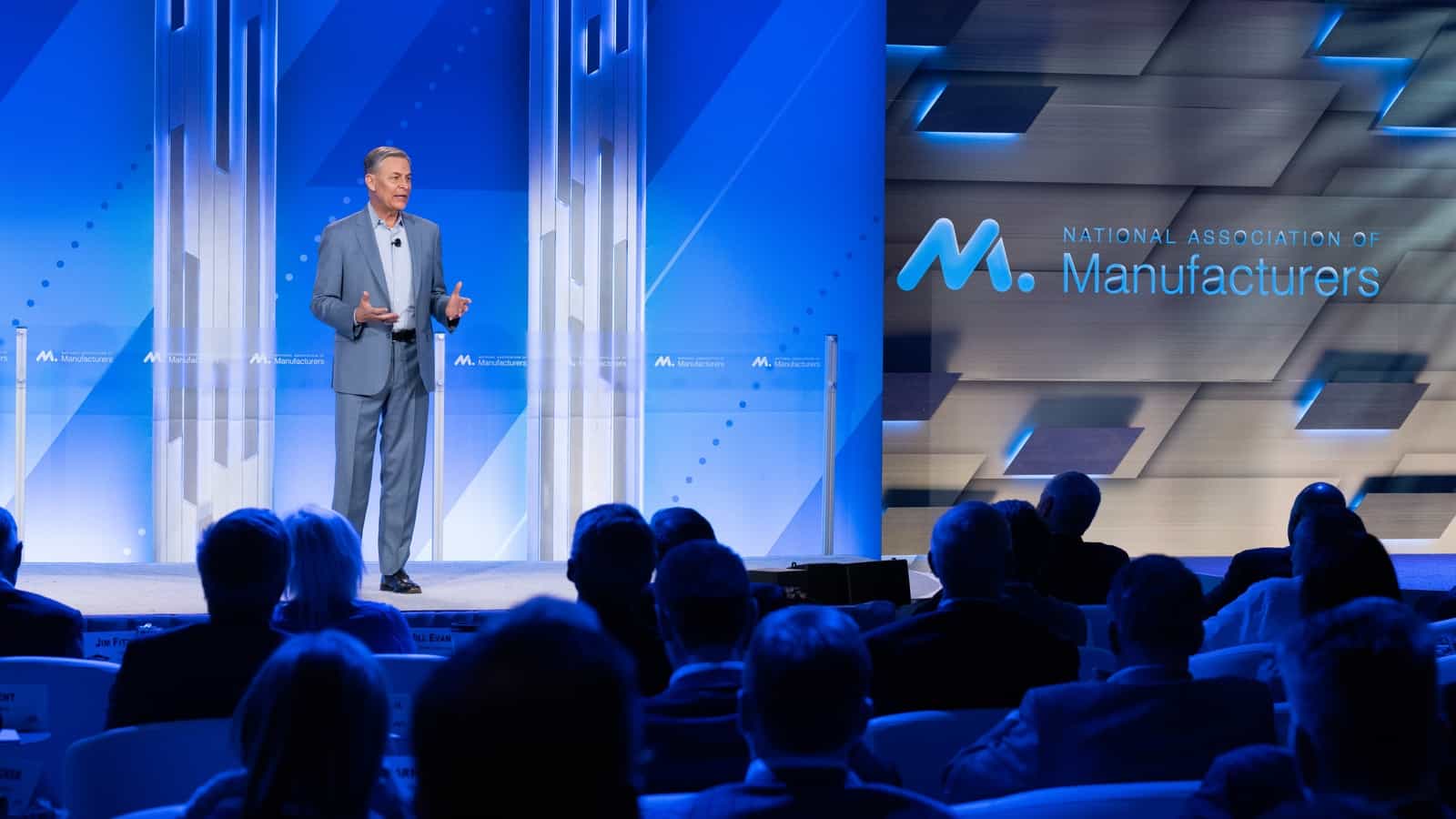
The NAM is committed to upholding the priorities of manufacturers across the United States—and because the manufacturing industry is advancing, changing and innovating constantly, the NAM is always looking for new voices to share their perspectives and experiences.
Adding new talent: At the spring 2024 board meeting, the NAM elected a series of new leaders who will serve on the NAM’s Board of Directors—the leadership team that upholds the NAM’s mission and promotes the industry’s values and competitiveness worldwide.
The new members include:
- Dan Abramson, Senior Vice President, Americas Market Expansion, FourKites, Inc.
- Jason Alexander, Enterprise Industry Leader – Industrials, RSM US LLP
- Alison Bodor, President and CEO, American Frozen Food Institute
- Kevin Boone, Executive Vice President and Chief Commercial Officer, CSX Corporation
- Magen Buterbaugh, President & CEO, Greene Tweed
- Adrian Button, Senior Vice President, Operations, Carrier Global Corporation
- AI Collins, Group President, Corporate Development & Sustainability, Fluor Corporation
- John Coykendall, Vice Chair and Industrial Products & Construction National Sector Leader, Deloitte
- David Dunbar, President and Chief Executive Officer; Chairman of the Board, Standex International, Inc.
- Rene Garza, Senior Vice President of Planetary Health Biosolutions, Novonesis
- Steven Hedlund, Executive Vice President, Chief Operating Officer, Lincoln Electric Holdings, Inc.
- Edgardo Hernandez, Executive Vice President and President, Manufacturing Operations, Eli Lilly and Company
- Richard Howe, Executive Vice President – Deep Water, Shell plc
- Patricia Hume, Chief Executive Officer, Canvas GFX Inc.
- Jill Jacobson, Vice President, General Counsel and Secretary North America, Electrolux, North America
- Regina Jones, Senior Vice President, General Counsel and Secretary, Archer Daniels Midland Company
- Karl Jorgenrud, President, Performance Coatings Group, The Sherwin-Williams Company
- Tracy Kemp, Senior Vice President and Chief Information and Digital Officer, Allegion plc
- Michael Lefenfeld, President & Chief Executive Officer, Hexion Inc.
- Boyce Martin III, Executive Vice President, General Counsel and Secretary, Jamison Door Company
- Tim Millwood, Senior Vice President and Chief Supply Chain Officer, AGCO Corporation
- Nicole Murphy, Executive Vice President, Head of Pharmaceutical Operations and Technology, Biogen
- Kenny Rocker, Executive Vice President, Marketing & Sales, Union Pacific Corporation
- John Tate, Senior Vice President, Crown Equipment Corporation
- Leon Topalian, President and Chief Executive Officer, Nucor Corporation
- Keller Watts, Chief Business Officer, Smithfield Foods
- Melissa Williams Hoskins, Chief Executive Officer, WilliamsRDM
- Alex Wright, Chief Executive Officer, Ariel Corporation
- Jill Wyant, President and Chief Executive Officer, Madison Air
What we’re saying: “Our new board members will bring their own keen perspectives and varied backgrounds to the NAM’s critical work,” said NAM Chief of Staff and Senior Vice President of Membership Alyssa Shooshan. “Representing all areas of the manufacturing industry and all corners of the country, we are confident that these individuals will speak effectively for the manufacturing community, and we’re looking forward to everything they will bring to the conversation.”
Rio Tinto Copper Seeks to Power the Future
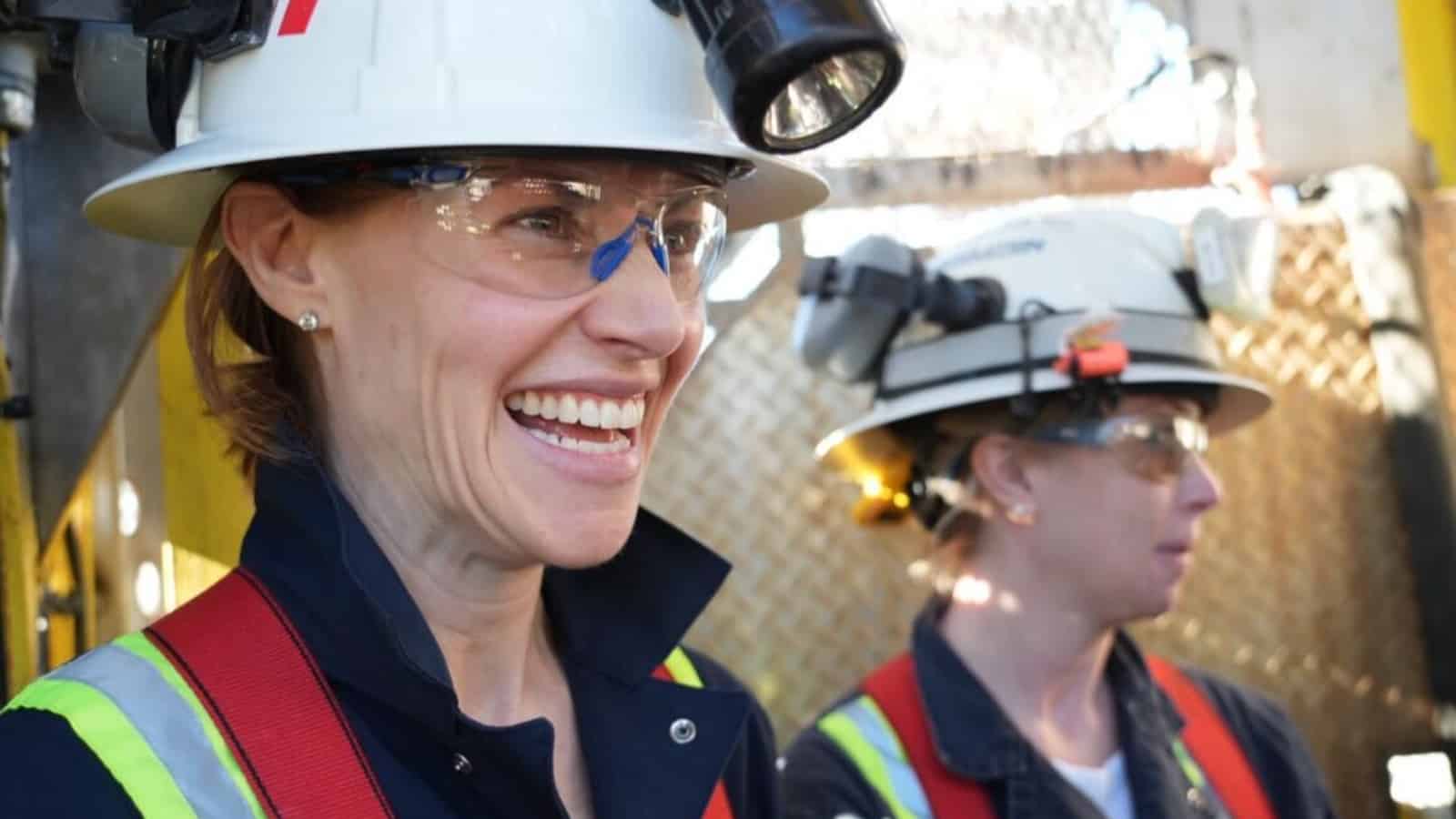
America’s fastest-growing industries increasingly rely on copper.
The critical minerals Rio Tinto produces play an essential role in making modern life work and help power the clean energy transition, said Rio Tinto Copper Chief Operating Officer Clayton Walker. “Think of increasing demand for things like electric vehicles, the copper plumbing in our houses … transmission lines, smartphones, electronic devices—the things you can’t live without all include copper.”
This criticality was brought home to the NAM during a site visit by leadership last Friday to the company’s Resolution Copper mine, an Arizona project with the potential to supply up to 25% of the nation’s copper demand.
Electrifying a revolution: Rio Tinto—which produces more than 10 different minerals and metals around the world—has copper operations in Utah and Mongolia with joint ventures in Chile and Peru and is working to open Resolution Copper and another copper-mining site, in Australia.
- These operations are going to become increasingly important as the world’s appetite for EVs grows, Walker told the NAM, because EVs require more copper than traditional vehicles.
- EV charging stations also require the metal, as do wind turbines, which “can contain up to 4.7 tons of copper,” according to Walker.
Speed permitting now: The U.S. consumes about 2 million metric tons of copper per year but produces just more than 1 million metric tons. However, “by 2035, that demand is estimated to be around 4 to 5 million tons of copper a year,” said Walker. “The question is, where are we going to get all that additional copper?”
- The answer, in his opinion, should be here at home. Once approved, Resolution Copper will be instrumental in making that happen. “The copper produced at Resolution would strengthen U.S. supply chains, reduce import dependency [and] add jobs, while employing world-class sustainability standards.”
- At that site, “we’ve been working on permitting for the last 11 years,” Walker continued. “The average time to permit [a mining project] in the U.S. is 17 to 20 years. That’s a long time. We’re not asking people to cut corners, but could we speed that process up?”
Critical minerals list: Policymakers could also help bolster copper and other critical materials production by harmonizing the efforts of numerous agencies to spur domestic production.
- For instance, the Interior Department curates a list of critical minerals that are “essential to the economic or national security of the U.S. and which have a supply chain vulnerable to disruption.” The Energy Department conducts critical materials assessments for materials vital for energy.
- Harmonizing these lists “would create more avenues for domestic supplies,” Walker said. “That would help projects get permitted faster and let us supply manufacturers with the minerals and materials they need sooner, including copper.”
Not your grandfather’s mining company: Another task on the company’s to-do list is changing the public’s perception of its industry.
- “We aren’t using pickaxes and wheelbarrows,” Walker laughed. “We have a control center that would rival NASA. We use drones, AI and autonomous equipment. Rio Tinto has the first fleet of driverless trucks in the world, and our team continues to leverage and benefit from high-tech innovation.”
- Effectively conveying the sophistication of their businesses is an ongoing task for manufacturers, Walker said. “We need to continue engaging with schools, educating and discussing the various trades and opportunities available while highlighting the potential within manufacturing—a career path that provides a great job with multiple opportunities.”
The last word: “It’s our responsibility to help show the next generation what opportunities are available,” Walker concluded.
Trend of the Week: Data in Action

Everyone knows that data is an indispensable resource, but putting it to use is a whole different challenge from collecting it in the first place. Here’s what you need to know about today’s manufacturing trend, the industry’s increasing reliance on data-driven insights.
What manufacturers should do: According to NAM experts, manufacturers seeking to make the most of their data should focus on five key steps:
- Understand how to gather data to enable meaningful analytics.
- Improve data governance for quality and security.
- Determine what data are important to your business and operations.
- Learn how to assign value and view the data through the appropriate lens.
- Know how to use data to make business decisions.
Expert opinion: According to John Petrusick, managing director of NTT’s manufacturing data and analytics practice, companies should consider working backward to some extent, and start by thinking about which business processes the data will influence—and how.
- “Most of us have grown up in a world where we think of data as a flow from source to consumer, or left to right,” he noted. “In such thinking, we have generated analytics and insights historically by first thinking about ‘what data do I have?’ But what if we thought about generating analytics and insights by thinking ‘right to left’?”
Resources for you: Looking for more resources on data management? Start with these NAM offerings:
- This Master Class Series from the Manufacturing Leadership Council (the NAM’s digital transformation division) will guide you through case studies and best practices regarding data analysis.
- CONNEX Marketplace uses data visualization tools to help you make connections to suppliers and buyers, offering exceptional insight into your supply chain.
- The NAM’s Power of Small newsletter keeps small and medium-sized manufacturers up to date on advocacy, policy, digital trends and much more. Check it out.
Read the full 2024 trends report here.
Reports: Obesity a Challenge for Manufacturing Employers

Obesity is costing U.S. companies and their workers hundreds of billions of dollars a year, according to a new report, the findings of which are in line with those of a 2023 NAM report on employer-sponsored health care.
What’s going on: “Obesity and overweight are estimated to have caused a staggering $425.5 billion in economic costs to U.S. businesses and employees in 2023, according to a report released by GlobalData Plc, a leading data and analytics company,” MarketScreener reports.
- The findings of the GlobalData report, “Assessing the Economic Impact of Obesity on Employers: Identifying Paths Toward Work Force Health and Well-Being,” are consistent with those of a recent NAM report, “ Manufacturers on the Front Lines of Communities: A Deep Commitment to Health Care ,” which notes significantly higher health care costs for individuals who are obese or carry excess body weight.
- “These additional costs account for $170 billion to $200 billion in annual spending in the U.S., making [these conditions] a significant cost for employers,” according to the NAM report.
Why it’s important: Obesity can make workers more prone to absenteeism (taking time off) and presenteeism (being less productive while on the job), both of which come with a significant price tag, according to the reports.
- Some 46.1% of manufacturer respondents to an NAM survey said obesity affected their workplace productivity and employees’ ability to complete their job functions.
- Absenteeism costs employers $82.3 billion each year, with presenteeism accounting for an additional $160.3 billion, according to the GlobalData report.
Impact on manufacturing: The economic impact of excess body weight on manufacturing is the fourth highest of the seven industries examined by GlobalData, at $44.5 billion annually.
What can be done: Manufacturers care deeply about ensuring their employees have access to high-quality, affordable primary care providers who can help employees manage their weight through personalized interventions like diet, exercise, behavior modification, medications and surgery.
The last word: “Manufacturers support efforts to continue to destigmatize these chronic health challenges and approach them like any other condition so that workers and their families feel comfortable choosing from the full suite of available treatment options in order to live healthier and more productive lives,” said NAM Vice President of Domestic Policy Charles Crain.
Primary Goals: NAM Hits the Road in 2024
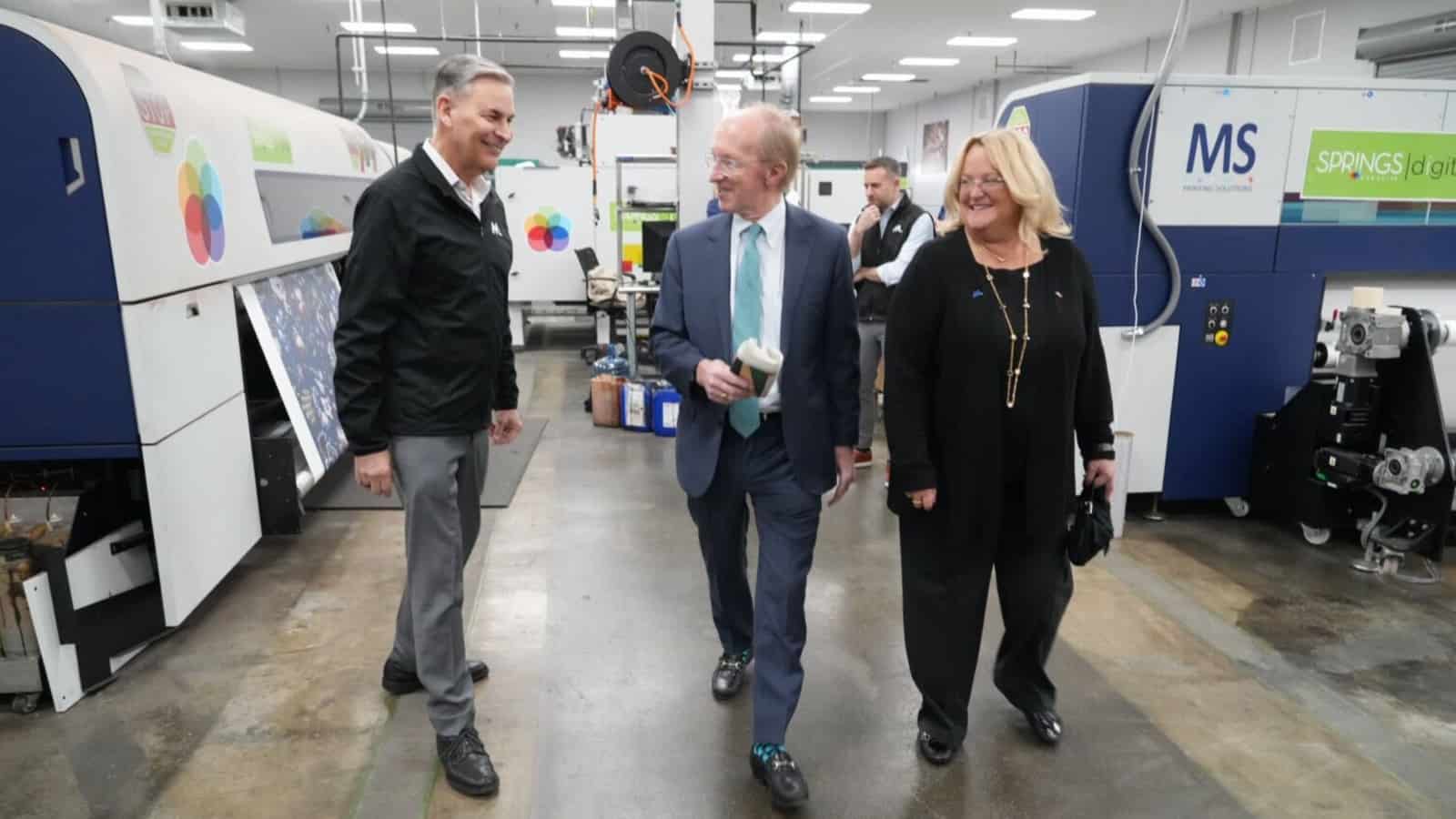
As candidates look to claim the support of manufacturers in 2024, the NAM launched its year-long 2024 Competing to Win Tour in South Carolina, days ahead of the South Carolina GOP primary.
- The tour spotlights the issues critical to winning not just manufacturers’ votes but also more manufacturing in the U.S.
Why it’s important: “We came to South Carolina to showcase the people and stories behind our industry and to translate their perspectives into action that will make our industry and country stronger,” said Johnson & Johnson Executive Vice President and Chief Technical Operations & Risk Officer and NAM Board Chair Kathy Wengel, who joined NAM President and CEO Jay Timmons, South Carolina Chamber of Commerce President and CEO Bob Morgan and South Carolina Manufacturers Alliance President and CEO Sara Hazzard on the first day of the tour.
- “Building these strong relationships beyond Washington, D.C., in the cities and states driving our sector deepens our understanding of regional challenges and reinforces the NAM as the leading voice representing all manufacturers, large and small,” Wengel added.
The launch: The tour began at Milliken & Company’s headquarters in Spartanburg on Wednesday, a poignant reminder of the importance of just one global technology-based manufacturer to lives, innovation and progress.
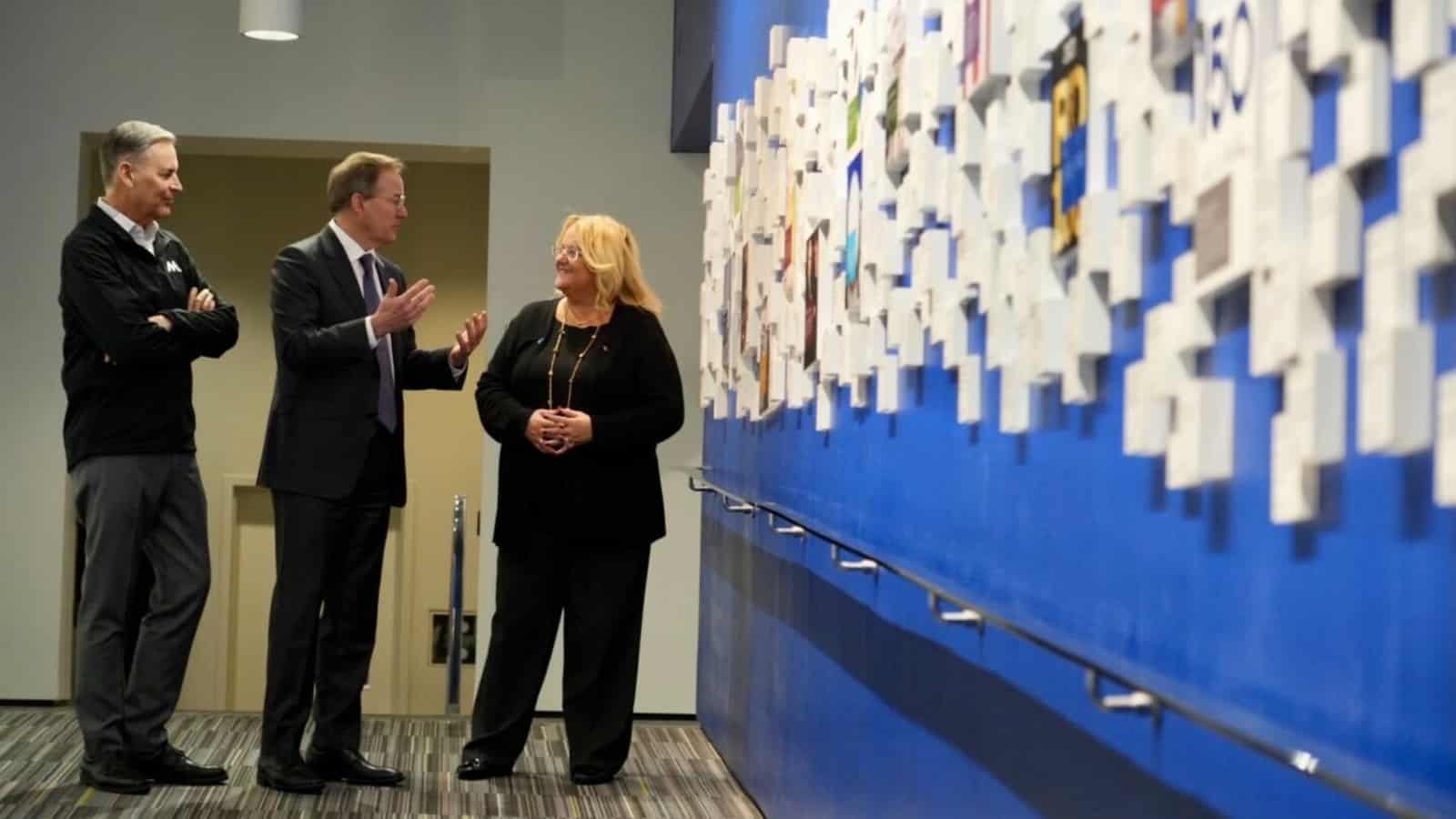
- The company’s 3,200 associates in the Palmetto State, as well as its broader U.S. and global team, make everything from safety gear and wound dressings and bandages to eco-conscious materials and technological innovations, such as digital printing, flooring, sustainable coating additives and more.
- “The average person touches about 30 to 50 [Milliken products] a day,” said Milliken President and CEO Halsey Cook.
- “Milliken embodies what we believe: manufacturing makes a positive difference. Their commitment to sustainability, ethics (named a World’s Most Ethical Company 17 years running) and a people-first workplace create a ripple effect,” said Timmons. “It’s why we need everyone supporting the success of manufacturers in South Carolina and the United States—to empower companies just like Milliken and help us grow more of them right here in America,” Morgan emphasized.
- “Milliken is a remarkable brand ambassador for the entire manufacturing industry in the United States,” summed up NAM Managing Vice President of Brand Strategy Chrys Kefalas. “As Michael Brown, Milliken’s executive vice president of operations, conveyed to us, the company is showing that digital transformation and artificial intelligence can be a force for good, helping its people leverage data analytics, for example, accelerating innovation and making modern manufacturing even more exciting for the next generation to be a part of.”
A boom story: Springs Creative Products Group CEO Derick Close, who heads several small enterprises in South Carolina, brought the NAM tour to Fort Lawn, South Carolina, where state-private partnerships and sound competitiveness policies have led to a boom in manufacturing investment and jobs.
- According to Close, recent investments in the community exceed $2.5 billion and stand to add 1,500 new jobs.
- Close, who is an economic development champion for South Carolina, took time to brief the group on how the area is ground zero as well in the story of the revival—and revolution—happening for the U.S. textile manufacturing sector, showing that U.S.-based textile manufacturers can compete against the rest of the world at quality, speed and price, so long as misguided policies don’t impede current advances. Springs Creative’s digital printing facility, which the NAM toured, is just one example. Springs Creative produces fabrics for such companies as Disney, Tempur-Pedic and Walmart.
- An added highlight of Close’s showcase was a tour of the new 1.5-million-square-foot, $423 million E. & J. Gallo wine and spirits production and distribution center—a testament to U.S. ingenuity and the more than 275 jobs it’s already created (with more on the way) to produce the best-selling spirit in the U.S.
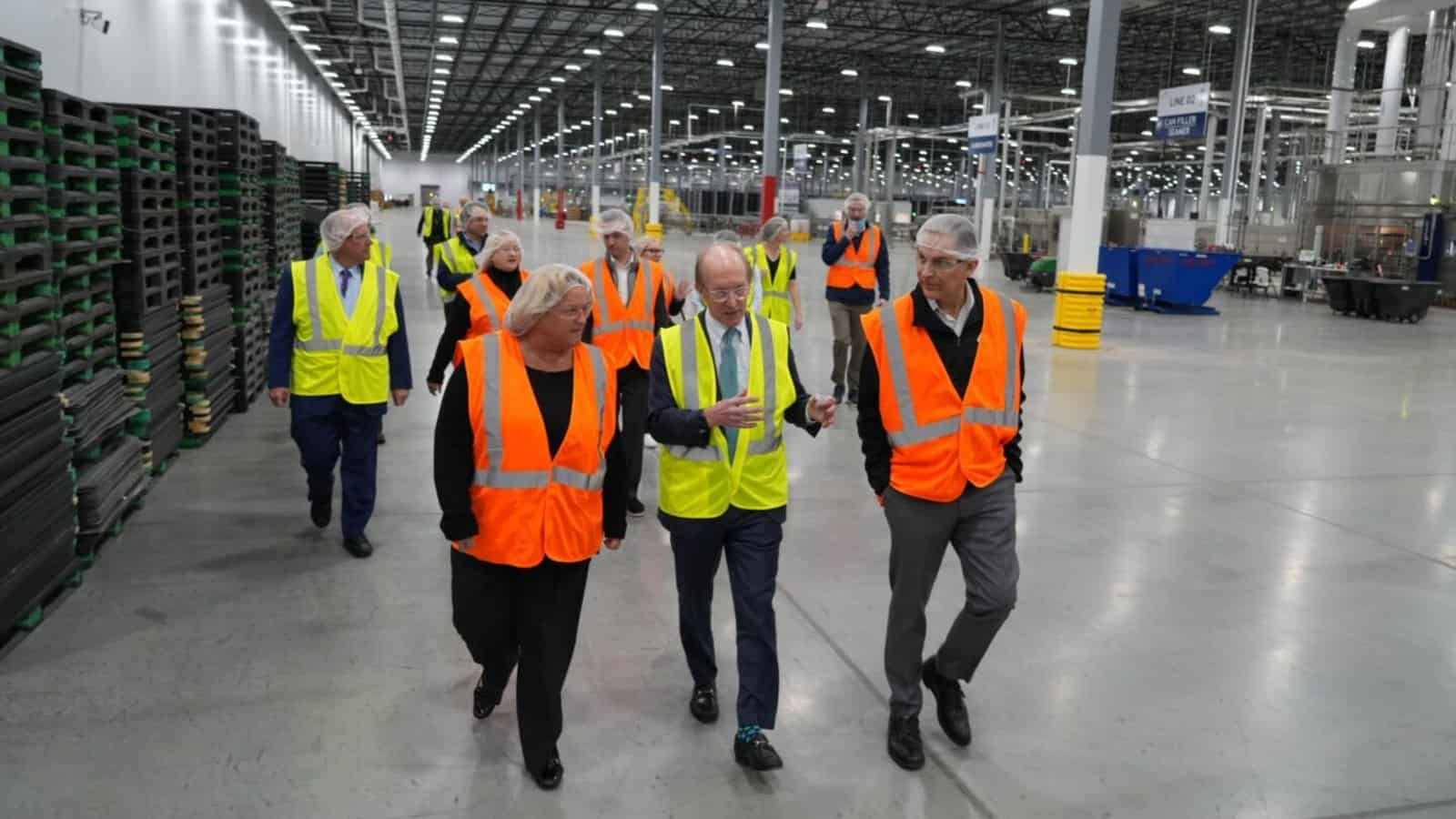
The message: The discussions at Milliken and Springs Creative focused on the need for policies that support manufacturing’s growth, from R&D incentives and competitive taxes to sensible regulations, resilient supply chains and permitting reform, to workforce development, including immigration reform, and energy policy.
The platforms: As newsrooms dwindle, the NAM is stepping into the breach, using its platforms, like NAM.org, social media and its email newsletters, including Input, to amplify manufacturing’s narrative. It’s a bid to ensure that as policymakers and candidates court manufacturers, they’re armed with real stories and concrete policy needs from the ground.
Looking ahead: The tour will continue across the United States, gathering insights and stories to bolster the NAM’s advocacy efforts. Next up: the Competing to Win Tour brings the NAM State of Manufacturing Address to Roseville, Michigan, as well as to Sanders Chocolate and Triumph Gear Systems in Macomb County on Thursday.
Trend of the Week: Sustainability Under Scrutiny

Manufacturers have long prioritized sustainability in their operations, but 2024 will bring new attention to the industry’s efforts. As we continue to explore the major manufacturing trends that will shape the industry this year, here’s what you need to know about this key development.
What manufacturers should do: Manufacturers looking to create strong sustainability plans to meet the expectations of regulators, boards and consumers should start by taking these steps, according to the NAM’s experts.
- Craft an overall organizational sustainability plan with metrics and reporting.
- Make changes and upgrades to support energy and resource efficiency, as well as reduce waste and emissions.
- Focus on sustainable products and packaging in addition to sustainable processes.
- Improve product reclamation or recycling in the circular economy.
Expert opinion: According to UL Solutions, company boards have a particularly key role to play in developing sustainability plans.
- “Boards of directors are bound by their fiduciary responsibilities to shareholders, but savvy directors also recognize that environmental and other ESG-linked risks and opportunities are vital to the long-term health of their organizations,” UL notes.
Resources for you: Check out these NAM resources to learn more about sustainability and compliance:
- NAM Energy will connect you with an adviser to create an energy management strategy that will help you cut costs and reduce your environmental impact.
- This podcast from Milliken & Company’s director of research, compliance and sustainability is an excellent case study for manufacturers seeking to remove or remediate PFAS chemicals.
- Dig into the NAM’s extensive collection of policy explainers, on everything from the Environmental Protection Agency’s regulation of particulates to the Securities and Exchange Commission’s regulation of climate disclosures.
Read the full 2024 trends report here.
Timmons Talks Trade, Tariffs, Democracy in Washington, D.C.
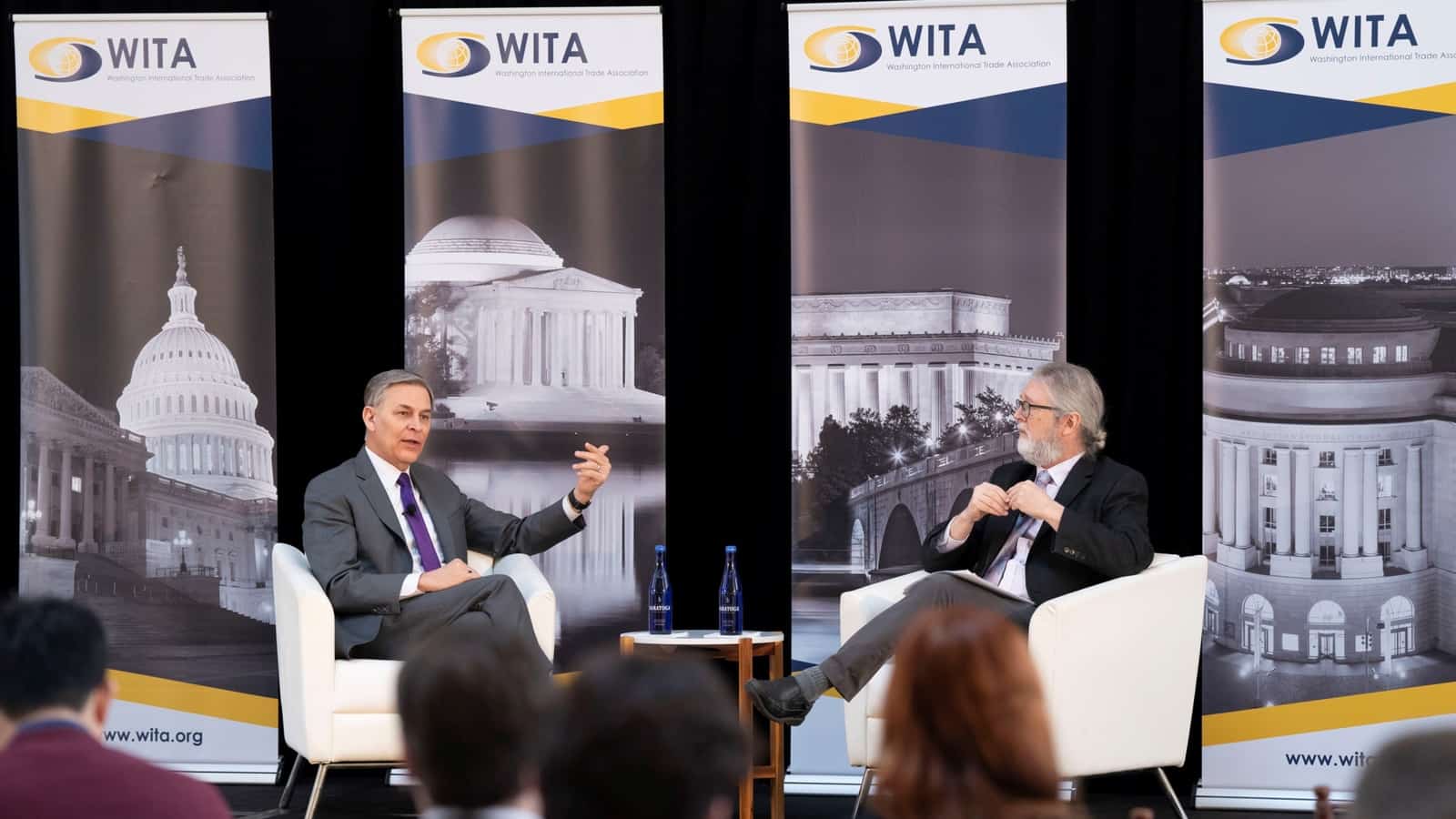
U.S. competitiveness on the world stage, trade agreements, intellectual property, democracy and regulatory certainty—these were just some of the topics NAM President and CEO Jay Timmons covered in a Tuesday interview with POLITICO’s Doug Palmer during the 2024 Washington International Trade Conference.
- The meeting was attended by senior U.S. trade officials and foreign ambassadors and hosted by the Washington International Trade Association in Washington, D.C.
Safeguarding IP: With the World Trade Organization’s 13th Ministerial Conference coming up later this month, Timmons discussed the damage that would result from one of the meeting’s expected agenda items: an expansion of a 2022 TRIPS waiver on IP rights to include COVID-19 therapeutics and diagnostics.
- “Intellectual property is truly the lifeblood of manufacturing,” said Timmons, who met with WTO Director-General Dr. Ngozi Okonjo-Iweala and WTO Deputy Director General Angela Ellard in Geneva last March to discuss the waiver.
- Manufacturers “work hard, and it’s always been kind of a given from the U.S. perspective that intellectual property protections would be front and center. … Obviously, we want to facilitate the growth of manufacturing in other areas of the world, too. But … [it] is a giant leap too far if therapeutics and diagnostics are included in the waiver.”
- American agreement to the expanded waiver, Timmons said, would be tantamount to the federal government telling manufacturers in the U.S., “By the way, we want you to invest in developing more innovations here in this country if we’re just going to turn around and give them away.”
Trade and tariffs: If the U.S. wants to remain competitive, we must negotiate a trade agreement now—and pass the Miscellaneous Tariff Bill, Timmons told Palmer.
- “Trade is really the recipe for peace and the recipe for working together harmoniously,” he said. “We’d like to see more trade agreements. We haven’t seen one negotiated here in the United States for over 10 years—and the rest of the world, quite frankly, is eating our lunch when it comes to negotiating these agreements.”
- The U.S., which has been operating without an MTB for more than three years, “need[s] MTB to not just meet our economic goals and not just feed the supply chains of manufacturers, but also to meet our national security objectives.”
Democracy vs. autocracy: Timmons—who last July led the American business community delegation to Cancun, Mexico, for meetings ahead of the third U.S.–Mexico–Canada Agreement “Free Trade Commission”—stressed the importance of the USMCA to underpinning democratic values worldwide.
- “This agreement is incredibly important to our national security, and it is important to our place in the world,” Timmons continued. “We need to expand the relationship, whether it’s trade or other relationships here in North America, and we need to embrace the relationships and our allies around the world—in Europe and Australia and New Zealand and Japan and other areas—because we are facing a choice … between free market economies and democracies and command economies and autocracies, and I want to strengthen the former, not allow the latter to bloom.”
Other needs: Timmons talked about other manufacturing priorities for the current administration and the next.
- “We need regulatory certainty that gives business leaders the ability to plan for the future,” he said. “We [also] need to invest in workforce incentives. All of those and infrastructure, which we have done, and we continue to do. You can’t just open up the trading system and not expect capital to flow outside of our borders if you don’t have the right policies internally.”
NAM in the news: Read POLITICO Pro’s coverage of the conference and Timmons’ interview here and here.
What’s Ahead for Manufacturing in 2024?

Getting a solid forecast of the year’s key issues in manufacturing can help your business prepare for anything. A panel of experts recently shared their 2024 outlook in the webinar “What’s Ahead for Manufacturing in 2024?” hosted by the Manufacturing Leadership Council, the NAM’s digital transformation arm.
They offered insights on the 2024 manufacturing economy, legislative climate, digital trends, resilience strategies and more.
Economic outlook: NAM Chief Economist Chad Moutray provided a manufacturing economic update.
Key takeaways:
- The NAM Q4 2023 Manufacturers’ Outlook Survey revealed that more than 66% of member companies have a positive economic outlook for 2024, yet opinions are mixed on whether there will be a recession.
- The top economic challenge this year will be the workforce, with the labor market cooling substantially but remaining tight, Moutray said.
- Private manufacturing construction spending is at an all-time high of $210 billion thanks to the production of semiconductors, electric vehicles and batteries, and general reshoring.
- Risks this year include geopolitical turmoil, slow global economic growth, cost pressures, talk of a recession and labor issues, among others.
Policy perspective: NAM Vice President of Domestic Policy Charles Crain gave an overview of the current climate in Washington, D.C., and the NAM’s legislative priorities.
Key takeaways:
- The NAM will continue its focus on tax policy following House passage of an NAM-supported bipartisan tax package that would reinstate three manufacturing-critical tax provisions.
- Manufacturing is facing a regulatory onslaught, with the average manufacturer paying $29,000 per employee per year due to unbalanced, burdensome regulations, according to a recent NAM-commissioned study.
- Artificial intelligence is a hot topic on Capitol Hill, with 60 AI-related bills introduced in Congress last year. The NAM is working to help policymakers understand the benefits of AI, including safety, worker training, product design and development, and efficiency.
Manufacturing 4.0 Trends: MLC Senior Content Director Penelope Brown offered a look at digital manufacturing trends on the horizon.
Key takeaways:
- Manufacturers can expect to see a broader adoption of existing AI applications, including predictive/preventative maintenance, improved processes and enhanced productivity.
- According to the MLC’s recent Smart Factories and Digital Production survey, 65% of manufacturers anticipate their level of M4.0 investment this year will stay the same as last year.
- Other trends to watch include the rise of global partnerships such as Catena-X and CESMII, digitized supply chains and reshoring.
Resilience perspective: Cooley Group President and CEO (and MLC Board of Governors Chair) Dan Dwight shared his approach to resilience in 2024 and the years to come.
Key takeaways:
- Business leaders should prioritize agility and adaptability, even if it means admitting to suboptimal results that require redirection.
- Resilience doesn’t mean perfection; it means learning from failures.
- AI and machine learning contribute to resilience by building out end-to-end visibility across an organization—from vendors to manufacturing operations to customers.
For additional details from these experts, watch “What’s Ahead for Manufacturing in 2024?”
